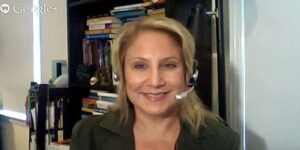
Can Essentialism Help Your Team Avoid Burnout?
Imagine an organization that consistently delivers exceptional results, maintains high employee retention, and fosters a culture of growth and passion. This may seem beyond reach

Imagine an organization that consistently delivers exceptional results, maintains high employee retention, and fosters a culture of growth and passion. This may seem beyond reach

In today’s uncertain business and economic environment, employee mental health challenges are on the rise. In response, workforce planning is emerging as a crucial strategy

As organizations move beyond the pandemic, workforce development is changing in fundamental ways. For example, wellbeing has emerged as a top workforce priority, and this

In today’s competitive post-pandemic world of work, HR and business leaders recognize that employee wellbeing is a must-have for a strong, successful organizational culture. This

EDITOR’S NOTE: At TalentCulture, we recognize a healthy workforce is a more engaged and productive workforce. That’s why we’re spreading the word about the importance

The events of the last few months have brought increased attention to the value that diversity, equity, and inclusion (DEI) bring to the workplace and

Our beloved Krups coffee maker decided it would brew its last wonderful cup of coffee this week. That might not sound like much to you.

Recent headlines suggested that workforce wellness has failed. But “Wellness 2.0” is rewriting that story. What’s new? Read more

What’s the business value of positive psychology? Research suggests that it could be much more powerful in driving workplace performance than we think

Social engagement is not a management overlay on a toxic culture. It’s not a Band-Aid, a work-around or a cure-all. But what DOES it take to be an effective social leader in today’s world of work?

Is “vacation” a vanishing breed? Even when we’re able to get away from work, our connections follow us. How can we disconnect and de-stress in a world that’s always “on”?
“All I know is that sometimes you have to be wary Of a miracle too good to be true All I know is that sometimes